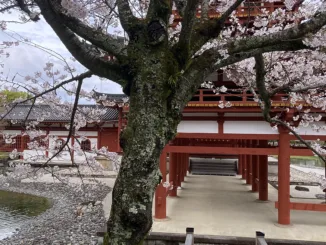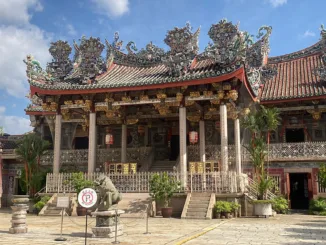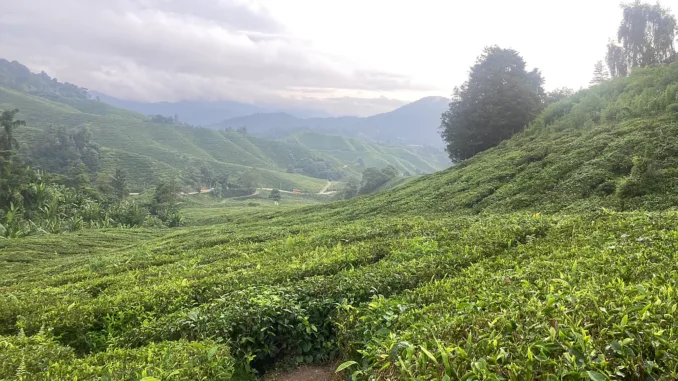
After taking in a brief moment of a tea ceremony in Thailand, I finally had the chance to participate in the full experience recently in Malaysia.
BY TANYA NANETTI
SENIOR ONLINE CORRESPONDENT
Photos by Tanya Nanetti
In the years that I worked as a barista in a café, tea always played a marginal role in my daily work routine. I worked in places where a tea bag was simply brewed as at home, or at most, we used high-quality loose teas and steeped them in water at a specific temperature, for a specific time. My experience as a customer in cafés and tearooms throughout the Western world was more or less the same; even the fanciest tea house usually offered simply infused teas.
It was when I began traveling in Southeast Asia that I first discovered a different way of preparing tea—something more akin to the tea ceremony I had only seen in films.
A brief stop at the cozy Ashram Tearoom in Sukhothai, Thailand, opened my eyes to a completely different tea experience. It involved only pure teas (not aromatic blends) to be infused several times, sometimes for only 10 or 14 seconds, in tiny teapots that looked like fancy toys.
This technique was fascinating and the tea tasted amazing, evolving infusion after infusion. I definitely wanted to learn more about it, as I had not been able to participate in the ceremony.
A Visit to Tanah Rata
Fortunately, I got my chance a couple of weeks later when I visited the town of Tanah Rata in the Cameron Highlands, the unofficial tea capital of Malaysia.
We spent the morning visiting one of the local plantations. Afterward, Cha Ren, the lovely hostess of our guesthouse, joined us in her small tea room, where everything was ready for a private tea ceremony.
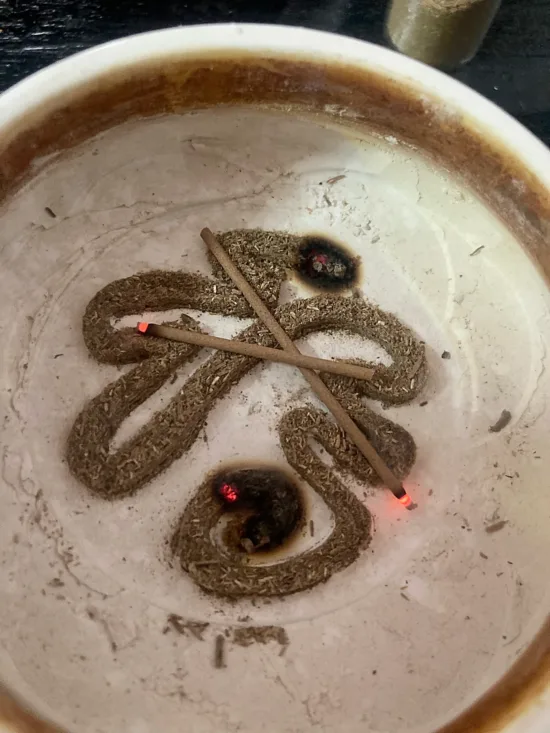
The Ceremony
Surprisingly, it began with an aromatherapy session.
“Traditionally,“ Cha Ren explained to us, “tea ceremonies begin with the burning of aromatic woods, followed by a short meditation to create the right state of mind to proceed with the tea ceremony.“
And that is how we started, slowly creating an intricate pattern of wood dust in a small burner filled with white sand—sandalwood for my partner, Endri, and agar wood for me. Once the design was finished, we lit the wood and let it burn slowly. Then we took 5 minutes to meditate and properly prepare for the ceremony.
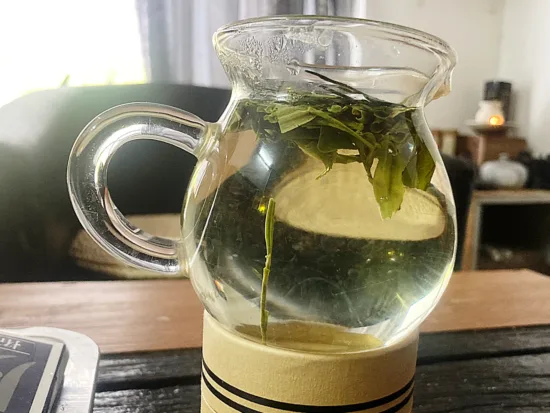
Dragon’s Well
With the meditation over, it was time to prepare the first tea, Dragon’s Well/Long Jing, one of China’s most famous green teas. For the vessel for the infusion of this specific tea, Cha Ren chose a small transparent teapot. In addition to being perfect for infusing the long tea leaves, it was perfect for showing us an ancient Chinese tradition: If the first tea stick falls vertically, the person who pours that tea will have immense luck. To this day, when a group of local men gathers for the tea ceremony, they often bet on whether the first stick will fall vertically, and how long it will take to fall.
First Serving and Etiquette
With this first brew, Cha Ren took the opportunity to show us all the basic parts of a proper tea ceremony. Once the tea is infused and ready to serve, the tea master pours it for each guest and him or herself, using the taller cup of the two available for each guest.
This taller cup is then emptied by all the attendees into their larger cup. The drinkers smell the tea to catch all the aromas. Only at this point will the tea master take his larger cup, introducing himself referentially to all the participants while uttering the words, “Qing yong cha“ (“Tea, please“).
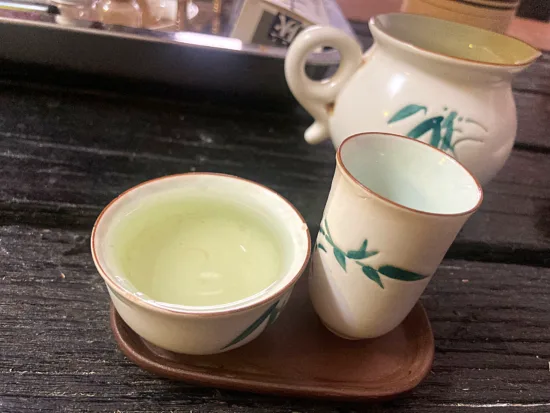
Sipping the Tea
After the guests’ courteous reply of “Xiexie“ (thank you), it was finally time to drink the tea, following two small precautions.
First, all participants had to wait for the tea master to sip the tea: a sign of respect, of course, but also a legacy of the past. In the old days, in fact, tea ceremonies were often held between rival clans to discuss important issues. With that first sip, the tea master proved to everyone that the tea was not poisoned and was safe to drink.
Second, all participants were advised to sip the tea in small sips, avoiding swallowing it all at once: to enjoy it better and still as a sign of respect, but also to avoid sending the wrong message. A cup swallowed in one gulp was always a clear sign of defiance, which could have ended really badly!
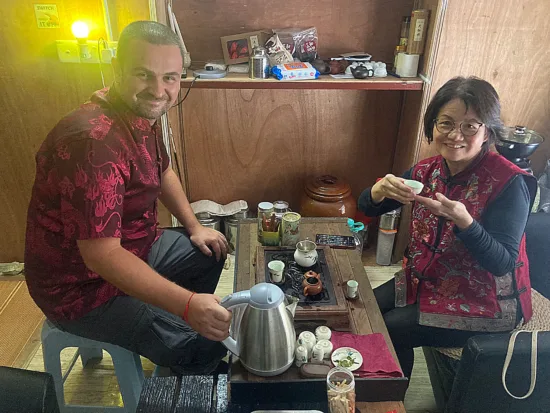
Big Red Robe
After enjoying the green tea in its many infusions, appreciating its herbaceous and roasted flavor, it was time for the second tea: Big Red Robe/Da Hong Pao, one of China’s most unique and prized oolongs.
We repeated the same ceremony as before, this time using a small clay pot almost filled to the brim with tea leaves. Cha Ren told us one of the legends behind the name “Big Red Robe.“ This mythical story mixes dragons and ancient tea trees with monks and the emperor’s mother; the legend shows all the love and respect for this ancient, high-quality tea.
Upon tasting the tea, we found that it not only had a really interesting history, but also a unique flavor profile, with earthy notes and hints of stone fruit, brown sugar, and molasses. It was highly oxidized, smoky, and woody, but at the same time smooth and sweet—truly a pleasure to drink.
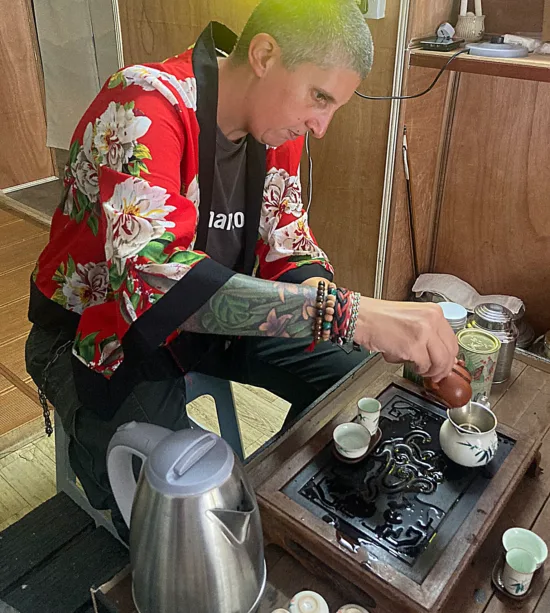
Serving the Tea: Palas Supreme
At that point it was time to practice the way of the perfect tea master by brewing the last tea of the day: the locally grown Palas Supreme. Once again, Cha Ren led us through the tea ceremony. But this time we were the ones who prepared the tea, offering it to the other participants.
It was the perfect way to end the tea ceremony and the afternoon. We left Tanah Rata and the Cameron Highlands, happy to have finally learned more about this traditional way to brew and share tea.
ABOUT THE AUTHOR
Tanya Nanetti (she/her) is a specialty-coffee barista, a traveler, and a dreamer. When she’s not behind the coffee machine (or visiting some hidden corner of the world), she’s busy writing for Coffee Insurrection, a website about specialty coffee that she’s creating along with her boyfriend.
Subscribe and More!
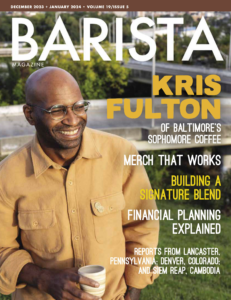
Out now: It’s the December 2023 + January 2024 issue! Read it for free with our digital edition. And for more than three years’ worth of issues, visit our digital edition archives here.
You can order a hard copy of the magazine through our online store here, or start a subscription for one year or two.



